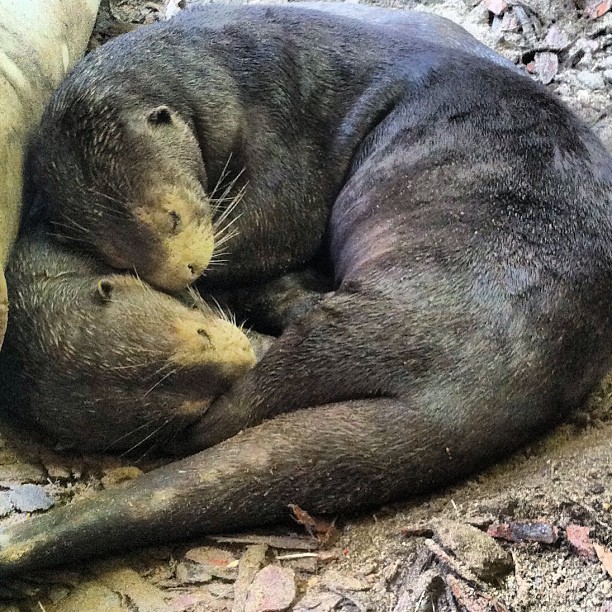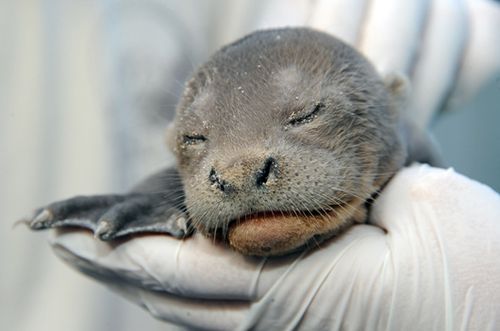Reproduction
 There
is an estimated total of 1,000-5,000 current wild-living Pteronura
brasiliensis (Duplaix et al. 2008). They usually live in groups of
5-8 otters with an average life span of about twelve years. The giant
river otter reproduces sexually and are monogamous, meaning one female
and one male mate for life. The female has a gestation period of 65-70
days and usually gives birth between October and November, the driest
time of the year, making it easier to catch fish. The litters usually
range from one to five offspring, with an average number of two per
family (Bender 2001).
There
is an estimated total of 1,000-5,000 current wild-living Pteronura
brasiliensis (Duplaix et al. 2008). They usually live in groups of
5-8 otters with an average life span of about twelve years. The giant
river otter reproduces sexually and are monogamous, meaning one female
and one male mate for life. The female has a gestation period of 65-70
days and usually gives birth between October and November, the driest
time of the year, making it easier to catch fish. The litters usually
range from one to five offspring, with an average number of two per
family (Bender 2001).
During development, the entire family of otters helps to take care of the young that remain in the den. They are first able to open their eyes when they are about 4 weeks old, and between six and eight weeks of age, the young otters begin to learn how to swim (Duplaix et al. 2008). The developing giant river otters are typically able to live on their own by about nine months of age and are no longer dependent on their parents or other family members. However, they still remain a part of the pack. After two years, a young female is mature enough to mate with another male, and give birth to her own young (Carruthers 2006).
If you would like to learn more about organisms that remain with their young in dens during the first few months after birth, go to this website to learn about the polar bear and the rearing of its cubs!
Now that you have learned about the reproduction of giant river otters, continue on to the next page to find interesting facts about their interactions with other species!
